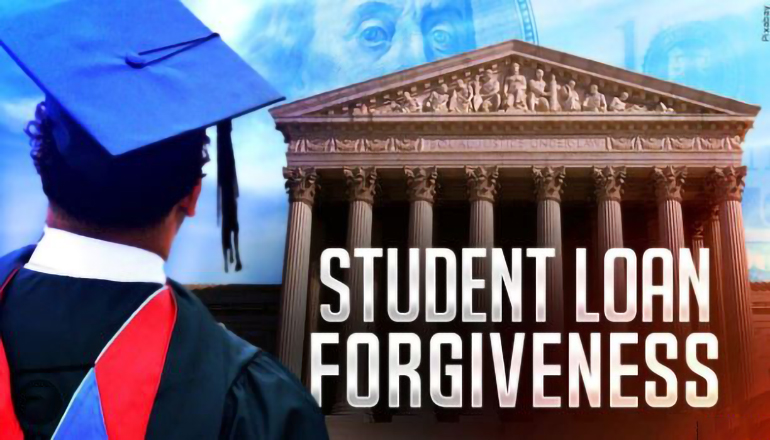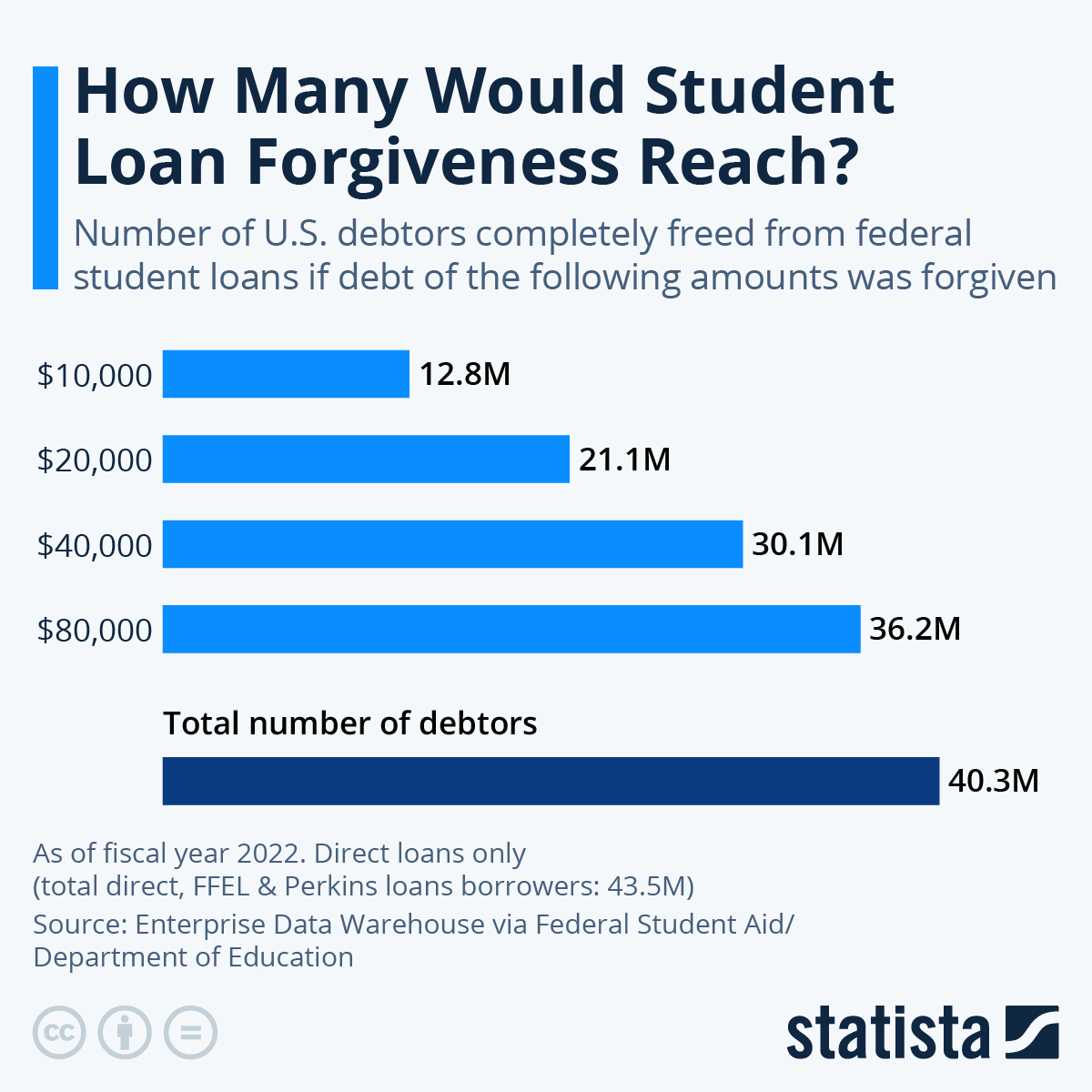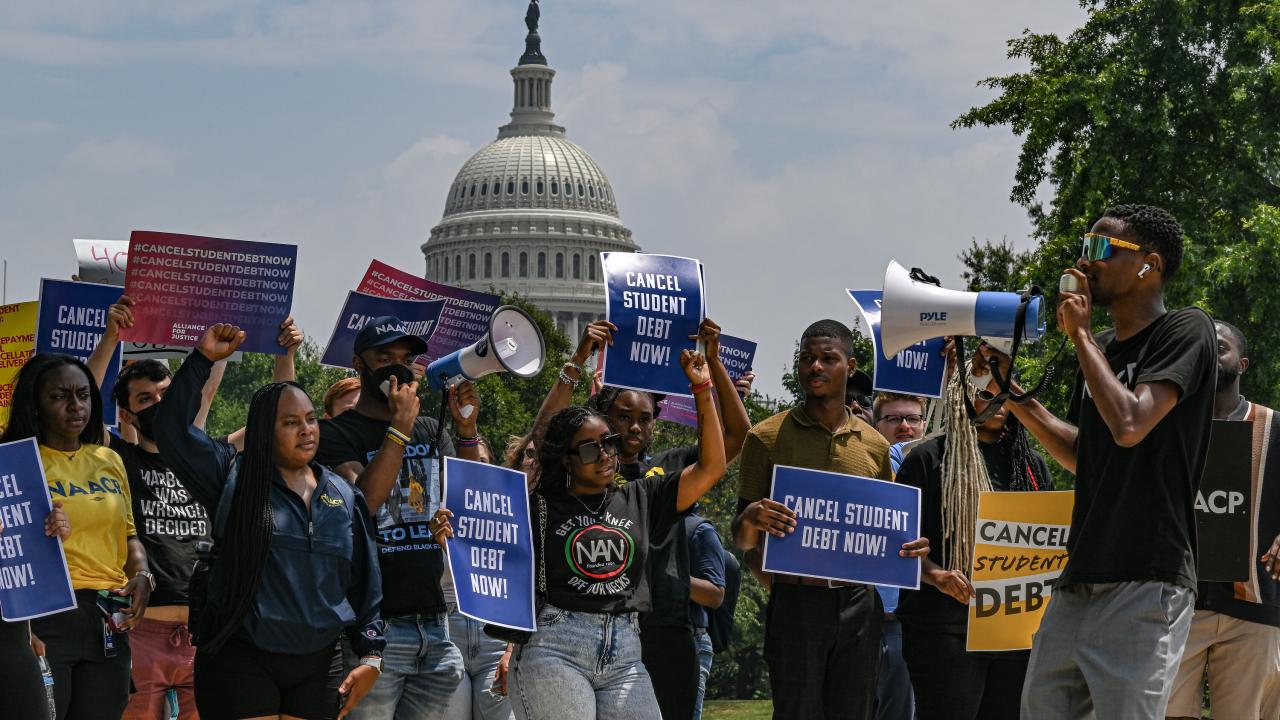Impact of UFT Loan Forgiveness on Borrowers
UFT loan forgiveness offers a significant lifeline to countless individuals burdened by student loan debt, dramatically altering their financial trajectories and unlocking opportunities previously out of reach. The immediate impact is undeniable, but the long-term effects ripple across their personal finances, career prospects, and overall well-being. Understanding these impacts is crucial to appreciating the transformative power of such programs.
The financial benefits of UFT loan forgiveness are immediate and substantial. For many borrowers, the weight of student loan repayments represents a significant portion of their monthly expenses, often hindering their ability to save, invest, or pursue other financial goals. Loan forgiveness eliminates this considerable monthly burden, freeing up a substantial amount of disposable income. This newfound financial flexibility can have a profound and cascading effect on various aspects of their lives.
Financial Benefits for Individual Borrowers
Eliminating student loan debt instantly increases a borrower’s net income. This surplus can be allocated towards various priorities, such as paying down other debts (like credit card balances or mortgages), building an emergency fund, investing in their future, or even making significant purchases, such as a home or a car. The increased disposable income also provides a significant psychological boost, reducing financial stress and improving overall well-being. This can lead to improved mental health and reduced anxiety levels, allowing borrowers to focus on their careers and personal lives more effectively.
Long-Term Effects on Borrowers’ Careers and Financial Stability
Loan forgiveness can significantly impact career choices. With the burden of student loan debt lifted, borrowers may be more willing to pursue careers in lower-paying but fulfilling fields like social work or teaching, instead of being constrained by the need for higher-paying jobs to quickly repay their loans. This can lead to a more fulfilling and impactful career path, even if it initially comes with a lower salary. Furthermore, the increased financial stability allows borrowers to invest in professional development, such as further education or training, leading to enhanced career prospects and higher earning potential in the long run.
Examples of UFT Loan Forgiveness Impact on Borrowers’ Lives
The impact of UFT loan forgiveness is best understood through real-life examples. While specific data on UFT forgiveness may be limited, we can extrapolate from broader student loan forgiveness programs.
Uft loan forgiveness – To illustrate the impact, consider the following examples:
- A teacher burdened by $50,000 in student loan debt can now afford to buy a home and invest in their retirement, significantly improving their long-term financial security.
- A nurse who previously worked extra shifts to manage loan repayments can now dedicate that time to professional development or spend more time with their family.
- A social worker can now afford to pursue a master’s degree, enhancing their career prospects and ability to serve their community more effectively.
Hypothetical Scenario Illustrating Impact of Loan Forgiveness
Imagine Sarah, a recent graduate with $40,000 in student loan debt, making monthly payments of $400. After UFT loan forgiveness, her monthly budget gains $400. This extra money could be used to pay off high-interest credit card debt, invest in a retirement account, or contribute to a down payment on a house, dramatically accelerating her progress toward financial independence and long-term stability. Without the loan forgiveness, Sarah might struggle to achieve these goals, potentially delaying major life decisions or experiencing ongoing financial stress. This illustrates the transformative potential of such programs.
Economic Implications of UFT Loan Forgiveness

The potential economic ramifications of widespread UFT (presumably referring to a specific type of loan, like a teacher loan forgiveness program) loan forgiveness are complex and multifaceted. While proponents highlight the stimulative effects on consumer spending and potential economic growth, critics raise concerns about the substantial fiscal burden and potential inflationary pressures. A thorough analysis requires careful consideration of both the short-term and long-term consequences.
A key aspect of this debate centers around the macroeconomic impact. Forgiveness could inject significant capital into the economy, boosting aggregate demand as borrowers use their freed-up funds for consumption or investment. This could lead to increased economic activity, job creation, and higher tax revenues in the long run. Conversely, the massive government expenditure required for loan forgiveness could lead to increased national debt, potentially crowding out private investment and causing inflationary pressures if not managed effectively. The magnitude of these effects hinges on several factors, including the size and scope of the forgiveness program, the economic climate at the time of implementation, and the behavior of borrowers following forgiveness.
Arguments For and Against UFT Loan Forgiveness from an Economic Perspective
Proponents of UFT loan forgiveness often argue that it stimulates economic growth by freeing up borrowers’ disposable income. This increased spending power can boost demand for goods and services, leading to a ripple effect throughout the economy. Furthermore, loan forgiveness can alleviate financial stress for borrowers, allowing them to invest in education, start businesses, or purchase homes, ultimately contributing to long-term economic prosperity. For example, the impact of student loan forgiveness on consumer spending has been a subject of intense debate, with studies showing mixed results depending on the size and structure of the program. Some studies suggest a significant boost to consumer spending, while others show a more muted effect.
Conversely, opponents emphasize the significant fiscal costs associated with widespread loan forgiveness. The government would incur substantial expenses, potentially leading to increased budget deficits and national debt. This could necessitate cuts in other government programs or tax increases, negatively impacting other sectors of the economy. Moreover, some economists argue that loan forgiveness disproportionately benefits higher earners, leading to an inefficient allocation of resources. They contend that the money could be better spent on other programs that directly address economic inequality or promote broader economic growth. The economic impact of the 2008 financial crisis serves as a cautionary tale, highlighting the dangers of excessive government debt and its potential consequences for economic stability.
Projected Costs and Potential Economic Benefits of UFT Loan Forgiveness Programs
The following table presents a simplified comparison of projected costs and potential benefits. It is crucial to remember that these are estimates, and the actual figures could vary significantly depending on the specific program design and macroeconomic conditions. Precise figures require detailed modeling based on specific loan amounts, borrower demographics, and economic forecasts.
| Item | Projected Cost (Billions USD – Example) | Potential Economic Benefit (Billions USD – Example) | Net Economic Impact (Billions USD – Example) |
|---|---|---|---|
| Direct Cost of Loan Forgiveness | 100 | 0 | -100 |
| Increased Consumer Spending | 0 | 50 | 50 |
| Increased Investment and Job Creation | 0 | 30 | 30 |
| Increased Tax Revenue | 0 | 20 | 20 |
| Total | 100 | 100 | 0 |
Impact on Government Budgets and Tax Revenues, Uft loan forgiveness
The impact of UFT loan forgiveness on government budgets and tax revenues is a critical consideration. Direct costs will reduce available funds for other government programs and potentially lead to increased budget deficits. However, proponents argue that increased consumer spending and economic activity could lead to higher tax revenues in the long run, partially offsetting the initial cost. The extent of this offsetting effect is uncertain and depends on factors such as the elasticity of tax revenue with respect to economic growth and the time horizon considered. For instance, a significant portion of the increased tax revenue might not be realized until several years after the loan forgiveness program is implemented. Moreover, the type of taxes affected (income tax, sales tax, etc.) will also influence the overall impact on government revenue. A comprehensive cost-benefit analysis is essential to accurately assess the long-term fiscal implications.
Program Administration and Oversight of UFT Loan Forgiveness

Effective administration and oversight are crucial for the success of any loan forgiveness program. Without robust systems in place, the program risks inefficiency, fraud, and ultimately, failure to deliver on its intended benefits. This section delves into the key aspects of managing and monitoring the UFT loan forgiveness program, ensuring accountability and transparency.
The complexity of administering a large-scale loan forgiveness program like UFT necessitates a multi-agency approach. Each agency plays a vital role in ensuring the program’s integrity and effectiveness.
Agencies Responsible for UFT Loan Forgiveness Program Administration
The specific agencies involved in administering UFT loan forgiveness will vary depending on the country and the specific program details. However, a typical structure might involve a primary agency responsible for overall program management, along with secondary agencies responsible for specific tasks such as loan verification, disbursement of funds, and fraud detection. For example, a national education department might oversee the program, while individual state agencies might handle application processing and verification. Furthermore, independent auditing firms often play a role in ensuring financial accountability and compliance. Clear lines of responsibility and communication between these agencies are essential for efficient program operation.
Methods for Monitoring and Evaluating Program Effectiveness
Monitoring and evaluation are critical for ensuring that the UFT loan forgiveness program achieves its objectives. Key performance indicators (KPIs) need to be established to track progress and identify areas for improvement. These KPIs might include the number of applications processed, the percentage of applications approved, the average processing time, and the overall cost per forgiven loan. Regular data collection and analysis are essential for identifying trends and potential problems. Furthermore, periodic audits, both internal and external, can help to detect fraud and ensure compliance with regulations. Feedback mechanisms, such as surveys and focus groups, can provide valuable insights into borrower experiences and program effectiveness. This data is then used to make adjustments to the program to enhance its efficiency and effectiveness. For example, if the average processing time is excessively long, the agency may need to streamline the application process or increase staffing levels.
Processes for Addressing Complaints and Resolving Issues
A well-defined process for handling complaints and resolving issues is essential for maintaining borrower trust and program integrity. This process should include clear channels for submitting complaints, a timely response mechanism, and a fair and transparent resolution process. Borrowers should have access to readily available information on how to file a complaint, and the process should be easy to understand and navigate. The agency should investigate all complaints thoroughly and take appropriate action to resolve the issue. This might involve correcting errors in application processing, providing additional information to the borrower, or initiating an appeal process. The process should also include mechanisms for escalating unresolved complaints to higher levels of authority within the agency. Transparency is key in this process, ensuring borrowers are kept informed of the progress of their complaint.
Step-by-Step Procedure for Appealing a Denied UFT Loan Forgiveness Application
Appealing a denied application is a crucial component of a fair and transparent loan forgiveness program. A clear and accessible appeal process is essential for borrowers who believe their application was unfairly denied.
The appeal process should be clearly Artikeld and easily accessible to all borrowers. It should also be straightforward and efficient, minimizing the burden on borrowers.
- Submit a formal appeal within the specified timeframe: This typically involves submitting a written appeal letter outlining the reasons for disagreement with the denial decision, along with any supporting documentation.
- Provide all relevant documentation: This may include supporting evidence such as updated employment records, proof of income, or any other documentation that supports the borrower’s eligibility for loan forgiveness.
- Clearly state the grounds for appeal: The appeal should clearly and concisely explain why the borrower believes the denial was incorrect and provide specific examples or evidence to support their claim.
- Await a response from the reviewing agency: The agency will review the appeal and supporting documentation. The borrower should receive a written decision within a reasonable timeframe.
- If the appeal is denied, consider further legal options: If the appeal is still unsuccessful, the borrower may have the option to seek legal counsel to explore further avenues for recourse.
Future of UFT Loan Forgiveness Programs

The current landscape of UFT (presumably referring to a specific loan forgiveness program, perhaps teacher loan forgiveness) programs presents both opportunities and challenges. While these initiatives aim to alleviate the burden of student loan debt and attract talent to crucial sectors, their long-term viability and effectiveness depend on strategic reforms and a commitment to continuous improvement. The future success hinges on addressing existing shortcomings and proactively adapting to evolving economic conditions and societal needs.
The efficacy of UFT loan forgiveness programs is directly tied to their design and implementation. Inefficiencies, such as complex application processes and lengthy processing times, can deter eligible borrowers and ultimately undermine the program’s goals. Furthermore, the sustainability of these programs requires careful consideration of budgetary constraints and the potential for unintended consequences. A data-driven approach, focusing on both program impact and cost-effectiveness, is paramount.
Potential Reforms and Modifications to UFT Loan Forgiveness Programs
Streamlining the application process is crucial. This could involve leveraging technology to create a user-friendly online portal, automating data verification, and reducing bureaucratic hurdles. For example, a system similar to the IRS’s online tax filing system could significantly expedite the application process, reducing processing times from months to weeks. Furthermore, clearer eligibility criteria and more transparent communication about program requirements can minimize confusion and improve participation rates. Targeted outreach efforts to underserved communities can also ensure equitable access to these vital programs. Finally, regular program evaluations and adjustments based on data analysis are essential for ongoing optimization.
Improving the Efficiency and Effectiveness of UFT Loan Forgiveness Programs
Increased transparency and accountability are essential. Regular audits and public reporting of program performance metrics – such as the number of applications processed, the average processing time, and the total amount of loan forgiveness granted – will build public trust and allow for informed decision-making. Implementing robust fraud detection mechanisms can also protect taxpayer dollars and ensure the program’s integrity. For example, implementing advanced analytics to identify patterns of fraudulent applications can significantly reduce program costs and improve the allocation of resources. Additionally, collaborating with relevant stakeholders – such as universities, financial institutions, and borrower advocacy groups – can foster a more coordinated and effective approach to program administration.
Visual Representation of the Future Trajectory of UFT Loan Forgiveness Programs
Imagine a graph charting the program’s evolution. The X-axis represents time, showing the program’s progression from its inception to a future point, perhaps 10 years out. The Y-axis displays two key metrics: the number of borrowers successfully receiving loan forgiveness and the program’s cost-effectiveness (measured as the cost per dollar of loan forgiveness granted). Initially, the graph might show a slow, upward trend in both metrics, reflecting the program’s initial rollout and subsequent growth. However, as reforms are implemented and the program matures, the graph should depict a steeper upward slope in the number of successful borrowers, coupled with a flattening or even downward slope in the cost-effectiveness metric, illustrating improved efficiency. This visualization showcases the program’s increasing impact and its improved resource allocation.
Long-Term Sustainability of UFT Loan Forgiveness Initiatives
The long-term sustainability of UFT loan forgiveness programs depends on several factors. First, a commitment to continuous improvement and adaptation is essential. Regular program evaluations and adjustments based on data analysis will ensure the program remains relevant and effective in the face of changing economic conditions. Second, transparent and accountable program management is crucial for building public trust and securing continued funding. Third, exploring alternative funding models, such as public-private partnerships or dedicated funding streams, can enhance the program’s financial stability. Finally, fostering a culture of responsible borrowing and financial literacy among students can reduce the overall demand for loan forgiveness programs in the long run. This holistic approach ensures the program’s longevity and its ability to serve its intended purpose effectively.